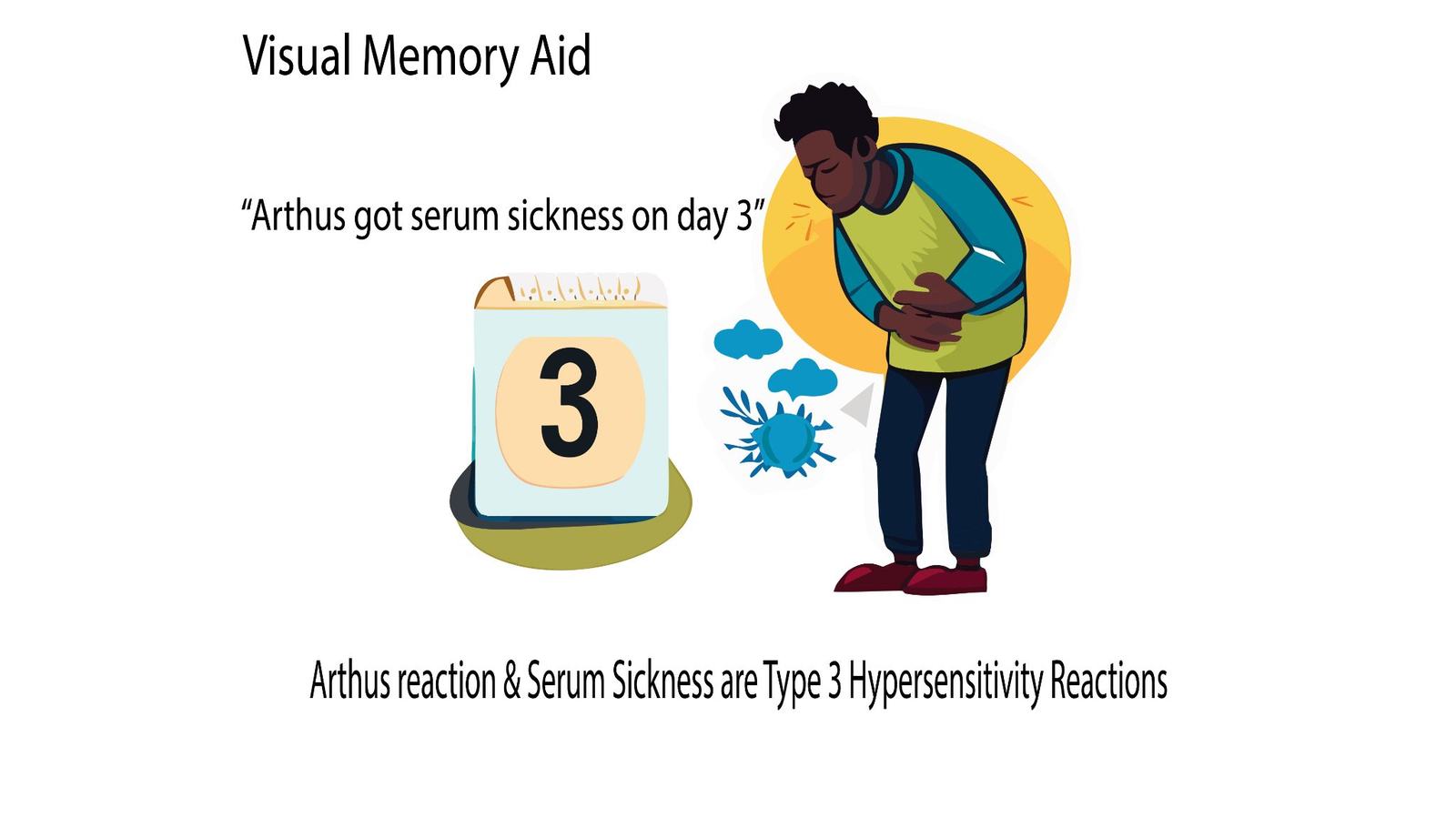Type III: Immune complex-mediated Hypersensitivity
IgG,IgM, IgA mediated
Sensitization: ‘freely circulating’ soluble antigens elicit T and B cell activation
Immunologic reaction: IgG or IgM antibodies bind with circulating antigens, form an immune complex and deposit in tissue. They activate complement cascade, attract neutrophils leading to the release of lysosomal enzymes and an inflammatory response in tissues.
Typical Time of Onset: 2-3 weeks
Examples: Immune–complex-mediated vasculitis and forms of glomerulonephritis,
SLE, IgA nephropathy, Acute poststreptococcal glomerulonephritis, rheumatoid arthritis
Conquer the Confusion!
Antigens in Type II and Type III
In Type II, the target antigen is a cell surface protein or antigenic substance that binds covalently to a cell surface protein.
In Type III, the antigens are freely circulating
Two typical type III hypersensitivity reactions are: Arthus reaction and serum sickness.
Arthus Reaction:
The Arthus reaction is localized inflammation caused by immune complex deposition, causing induration and erythema at the injection site in 2 hours.
Examples: induration and erythema at the site of tetanus immunizations if they are given at the same time too soon (minimum interval is usually 5 years)
Serum sickness:
The serum sickness is due to systemic inflammation caused by immune complex deposition in many areas of the body.
-It occurs 7-14 days after injection of a foreign serum or administration of a drug.
Symptoms & Signs: Fever, morbilliform rash, urticaria, arthralgia, lymphadenopathy, splenomegaly, and eosinophilia after injection of the serum or drug
-Examples: Maculopapular rash to ampicillin, diphtheria antitoxin, snake antivenom
Memory Aid!
Arthus got serum sickness on Day 3.
Arthus reaction and serum sickness are type 3 hypersensitivity reactions

